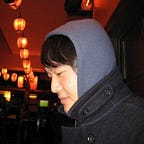ViroCore and ARCore 1.0 — Enabling AR development for Android
Google publicly launched ARCore 1.0 enabling augmented reality for over 100 million Android devices. You can now build and distribute AR apps or add AR features to your existing apps through Google Play with ViroCore. We also added some great new features including Physically Based Rendering (PBR) to bring more realism to your AR experiences!
ViroCore is SceneKit for Android developers, enabling you to rapidly build AR/VR/3D applications using familiar Android tools. ViroCore combines a high-performance rendering engine with a descriptive API for creating immersive AR/VR apps. While lower-level APIs like OpenGL require you to learn and precisely implement rendering algorithms, ViroCore requires only high-level scene descriptions. Easily add models, animations, physics, particle effects, and more to your Android applications. ViroCore supports ARCore, Google Cardboard, Google Daydream and GearVR.
ARCore 1.0 Support
The Viro platform now supports ARCore 1.0 so you can officially distribute your AR apps to Android users. ViroCore supports all the great features of ARCore including plane detection, hit test, cloud points and world tracking (ViroCore AR Developer Guide).
You can make rich immersive AR apps by leveraging ViroCore features like 3D Objects, Videos, Sounds, Physics, Particle Effects and ARPortals. See a full list of all ViroCore features by checking out our Developer Guides and JavaDocs.
If you are already developing on Viro, follow the Upgrade Instructions in our release notes to upgrade to ARCore 1.0 -> ViroCore 1.4 Release Notes
If you are ready to start building AR apps for Android, follow our guides and get set up in minutes -> ViroCore Getting Started
Physically Based Rendering (PBR)
We also added support for PBR. Physically-based rendering (PBR) is a collection of rendering techniques that produces more realistic lighting results for your scenes by incorporating an advanced model of real-world lights and materials. The theory behind PBR closely matches the physics of real-world lighting and surfaces.
In addition to looking better, PBR offers an artist workflow that’s far more intuitive: lighting and surface materials are based on physical parameters, so things naturally “look right” without having to resort to random tweaks.
Check out the ViroCore PBR Guide in our documentation for more information. Also, designers, learn more about PBR via this blog post, Asset Pipeline: Exporting PBR Textured 3D Models for AR/VR, where we provide detailed instructions on how to create PBR models.
So Start Building Your AR Apps Today!
- Get setup with ViroCore using our simple Getting Started guide.
- Check out our tutorial How to build Amazon’s AR View for ARCore/Android using Java that shows you step by step how to build an AR experience like Amazon’s and also how to integrate 2D views with AR scenes.
We are excited to see all the great AR applications you build using the Viro platform.
